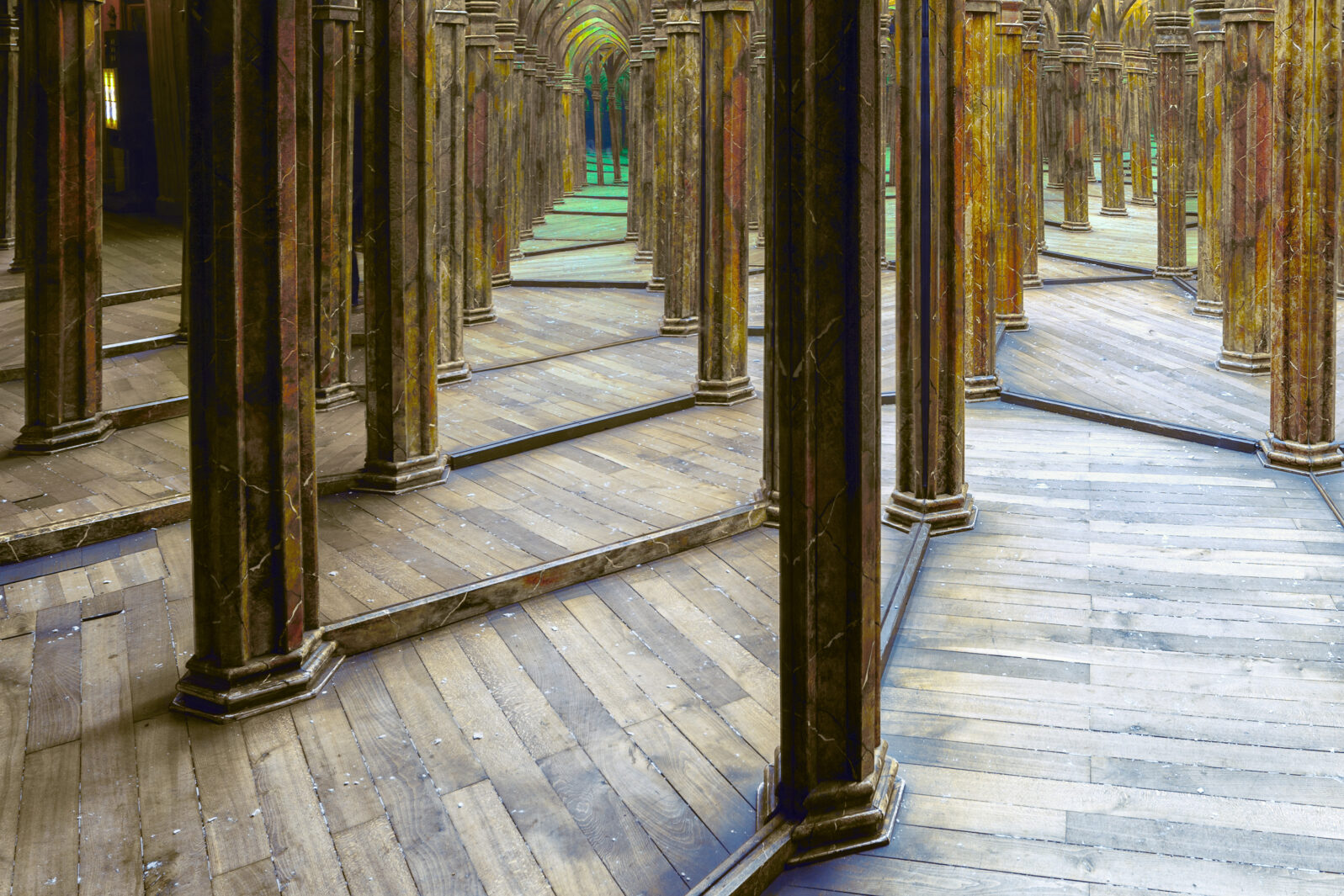Tales of the Mind: A Neurologist Encounters the House of Mirrors
Materialism is an intellectual trap, out of which neuroscience needs to climbYale University neurologist Steven Novella posted recently on the science of growing brain tissue in the lab. It’s interesting stuff, but then we come to the jumbled metaphysical musings that conclude his post:
There is a layer of weirdness to the very idea of brain tissue in a vat, because I think we are naturally uncomfortable with the very notion that our consciousness is the result of a clump of tissue shuttling ions around. It breaks the illusion that our brains evolved to have, a very compelling and persistent illusion – namely that the reality we perceive is real, rather than a constructed representation. That internal representation has a strong relationship to physical reality, but the two are not the same, and the relationship can break down in many ways (which give us weird glimpses behind the neurological veil).
Anything that reduces all this to cellular activity, which we can see in a petri dish, just slaps us in the face with this reality. Of course, I think it’s best to just accept it and to fully understand our true nature than to persist in metaphysical delusions.
Steven Novella , “Making Mini-Brains from Stem Cells” at NEUROLOGICAblog
Consider Novella’s two main ideas:
“[This is] the illusion that our brains evolved to have, a very compelling and persistent illusion – namely that the reality we perceive is real, rather than a constructed representation.”
and
“[This research] just slaps us in the face with this reality.”
Novella refutes himself. He first asserts that everything he knows is an illusion. Then he insists that his illusions have slapped him in the face with reality.
Goodness gracious.
If everything we perceive is an illusion, then how can we “know” anything, including such ambitious knowledge as “everything we know is an illusion”?
Novella senses this problem with his thesis and tries to elide it:
“That internal representation has a strong relationship to physical reality…”
But he can’t escape his house of mirrors quite so easily. If our perception is only of the representation and not of reality itself, how can we establish any “strong relationship to physical reality”? After all, any relationship to reality we perceive is itself just a perception too, equally disconnected from reality. We cannot test for reality because each test is itself a perception, which is an illusion no less than the perceptual illusion it tests. There’s no door marked EXIT from Novella’s hall of mirrors.

Philosopher Mortimer Adler (1902–2001) wrote a superb book, Ten Philosophical Mistakes (1985) covering this and related philosophical and logical errors. Adler dissects the fallacy Novella stumbles into in Chapter 1.
The fallacy stems from 17th-century philosopher John Locke’s flawed theory of mind.1 Locke’s An Essay Concerning Human Understanding (1690) was the first explicit modern exposition of what has been called the “Cartesian theatre”: the metaphysical fallacy that our senses project a representation of reality in our brains, and that we watch these representations, much as an audience watches a movie in a theatre. Picture yourself as a little “man” (a homunculus) snacking on popcorn. This childish concept marks the beginning of the modern Western conception of the self.
The Cartesian theatre is bad neuroscience and catastrophically bad metaphysics because it cuts us off from reality. If we understand it and accept it (Novella obviously doesn’t really grasp his own point), we deny any real knowledge of the world and implicitly any real knowledge of ourselves. This is the end to which materialist gibberish leads.
The truth is that the reality we perceive is real, and it must be real if we are to make any sense of the world. The things we perceive are not “constructed representations.” We perceive reality itself, and we know reality itself. We, of course, perceive and know it imperfectly, which is what Novella is really trying to say, muddled as he is.
So how does perception work? When we see something, what is it that we see? If we only see the perception of (say) a tree—a perception generated by our eyes and our brain—then we don’t really see the tree itself. We thus have no direct mental contact with the tree.
The correct understanding of perception was formulated by Aristotle and elaborated by St. Thomas Aquinas.2 It is essential to any coherent understanding of the mind. When we perceive a real object, we grasp the actual form of the object with our mind, which is itself a form. Aristotle said it beautifully: “The mind is, in a way, all things.”
He observed that our perceptions are not that which we perceive; perceptions are that by which we perceive. We perceive the objects in our environment by our faculty of perception. He emphatically distinguishes between that which we perceive (the real object) from that by which we perceive (our faculty of perception).
The world we perceive is not a “compelling and persistent illusion”. We perceive the real world, by grasping its forms in our [immaterial] mind. This is why materialism is such a catastrophe for the philosophy and science of the mind—it leads to self-refuting gibberish and cuts us off from genuine contact with reality.
Now one point that Novella makes is true: the process by which we grasp those forms—the process of perception—can lead us astray. Our perceptual faculties, of which we are not consciously aware, are tainted in various ways, by brain chemistry and by our past experiences and implicit biases, etc.
But the object of our perceptions and knowledge is reality itself, and we do have access to it. There is great value in the scientific understanding of our perception and the neurobiology on which it is based. But this genuine scientific insight must be based on coherent metaphysics, not solipsistic materialist gibberish that our knowledge is “a persistent illusion.”
If we know nothing of reality, we can say nothing meaningful at all. Materialism is an intellectual trap, out of which neuroscience needs to climb.
Notes:
1 John Locke’s theory was built on Thomas Hobbes’ materialism and René Descartes ’ metaphysical errors. Here is a summary of An Essay Concerning Human Understanding.
2 The approach to the mind developed by Aristotle. and elaborated by Thomas Aquinas. is called Aristotelian/Thomistic hylomorphism. From Stanford Encyclopaedia of Philosophy (2016): “Aristotle famously contends that every physical object is a compound of matter and form. This doctrine has been dubbed “hylomorphism”, a portmanteau of the Greek words for matter (hulê) and form (eidos or morphê). Highly influential in the development of Medieval philosophy, Aristotle’s hylomorphism has also enjoyed something of a renaissance in contemporary metaphysics.”
Also by Michael Egnor on the immaterial mind:
Atheist psychiatrist misunderstands the evidence for an immaterial mind. Patients with massive brain damage were shown to have a mental life.
Also: Four researchers whose work sheds light on the reality of the mind The brain can be cut in half, but the intellect and will cannot. The intellect and will are metaphysically simple
